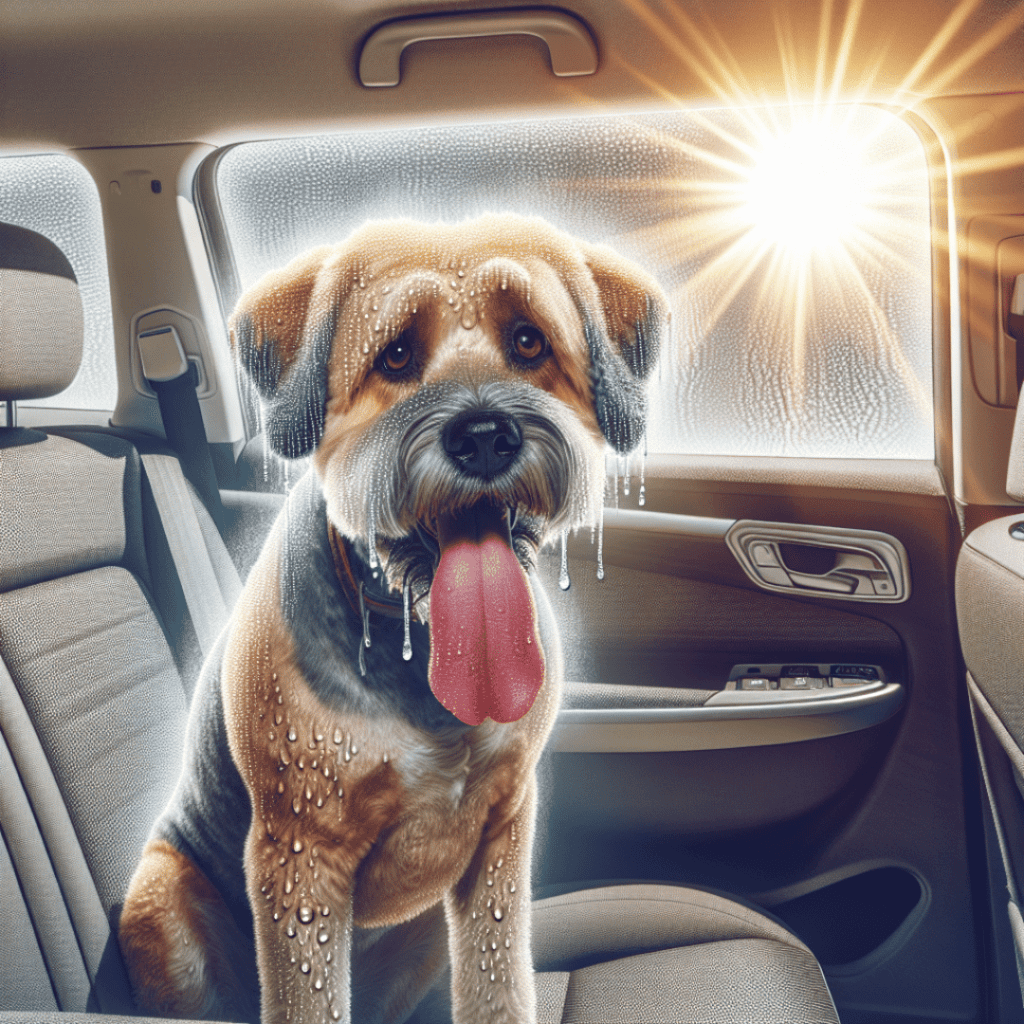10 Tips to Keep Your Furry Friend from the Heat This Summer

Introduction
As summer approaches, our thoughts might go to sunny beach days and barbecues. However, for our furry friends, the rising temperatures can signal danger, especially the peril of hot cars. Leaving pets in vehicles during the summer can lead to serious health risks including heatstroke or even death. This article aims to raise awareness of these dangers, educate pet owners and the community on preventive measures, and share immediate actions to take to protect our beloved pets. Let’s ensure our pets enjoy the summer safely!
1. Understanding the Risk
Temperature Dynamics in Cars
Cars can turn into ovens quickly, even on mild days. Studies show that on a 70°F day, a car’s internal temperature can soar to over 100°F in just 20 minutes. The dashboard, seats, and steering wheel can reach temperatures up to 200°F, which can burn paws and skin upon contact.
- How quickly a car heats bank
- Difference between outside and inside car temperatures
- Impact of varying weather conditions
Physiology of Heatstroke in Pets
Heatstroke occurs when your pet’s body cannot dissipate heat efficiently, causing their body temperature to rise dangerously high. Symptoms include excessive panting, drooling, reddened gums, vomiting, diarrhea, uncoordinated movement, and collapse.
- Signs and symptoms of heatstroke in dogs and cats
- Long-term health impacts
Legal Consequences
Various states have laws against leaving pets in cars under conditions that could cause suffering or harm. Penalties can range from fines to jail time, depending on the severity and the jurisdiction.
- Overview of laws against leaving pets in hot vehicles
- Penalties and how they are applied
2. Preventive Measures
Never Leave Pets in the Car
Leaving a pet in a car can lead to heatstroke within minutes and can be fatal. Ensure you always take your pet with you when you leave the car.
- Reasons to never leave pets unattended
- Common misconceptions debunked
Educating Others
Spreading awareness can save lives. Share articles, post on social media, and inform your friends and family about the risks of leaving pets in hot cars.
- How to spread awareness about the danger
- Role of community in preventing incidents
Planning Ahead
If you plan to travel with your pet, think ahead about pet-friendly venues and shady parking spots. Always have a backup plan if destinations are not pet-friendly.
- Tips for pet-friendly travel plans
- Alternatives to leaving a pet in the car
3. Immediate Actions to Take
Recognizing an Emergency
Knowing the signs of heatstroke can prepare you to act quickly. Look for distress signals like excessive panting, drooling, or lethargy.
- How to identify if a pet is in distress
- Signs that immediate action is required
Steps to Safely Remove a Pet
If you see a pet in distress in a hot car, call local authorities or animal control immediately. If you must break a window, be aware of legal implications and try to ensure that you have a witness.
- What to do if you see a pet in a hot car
- Legal implications of intervening
Post-Rescue Care
After rescuing a pet, it’s vital to start cooling measures immediately. Provide the pet with water and apply cool (not cold) water to their body. Seek veterinary care even if the pet appears to be recovering.
- First aid for heatstroke in pets
- When to seek professional veterinary care
4. Tools and Resources
Technological Aids
Various apps and devices can monitor the temperature inside your car and alert you when it gets too hot. Use them as an extra precaution.
- Apps and devices to monitor temperatures
- Alerts and reminders to check the backseat
Educational Material
Educate yourself and others with books, flyers, and reputable online resources. Knowledge is power.
- Books, flyers, and online resources
- Workshops and community programs
Community Support Networks
Join or form a local animal welfare group. Together, communities can create networks that safeguard all pets.
- Listing of local animal welfare organizations
- How to get involved or start a local chapter
5. Advocacy and Ongoing Initiatives
Policy and Advocacy
Advocate for stronger laws and community policies that protect pets from being left in hot cars. Engage with legislators to make a difference.
- How to promote stronger laws and policies
- Engaging with local and national legislators
Community Efforts
Organize neighborhood watches that keep an eye out for pets in cars. Celebrate success stories and build momentum to keep pets safe.
- Role of neighborhoods in safeguarding pets
- Examples of successful community-led initiatives
Continued Education
Regular reminders and updates on pet safety can prevent tragedies. Consider setting up an annual event focused on pet care in the summer.
- Importance of regular reminders and updates
- Setting up annual community events
Conclusion
As pet lovers, it’s our duty to ensure our furry friends’ safety is never compromised. By understanding the risks, taking preventive measures, and knowing immediate actions to take, we can protect our pets from the deadly heat of hot cars. Spread the word, stay vigilant, and enjoy the summer with your happy and healthy pets!
FAQs
- What should I do if I accidentally locked my pet in the car?
- How long can a pet safely stay in a car during summer?
- Are there any breeds particularly vulnerable to heat?
- Is it legal to break a car window to save a pet?
- How can I involve my community in this cause?
Like Our Blog? Check out our website doggy-detail.com
Our services: Dog Waste Removal, Pet sitting, Dog Walking & Visit N’ Play!
